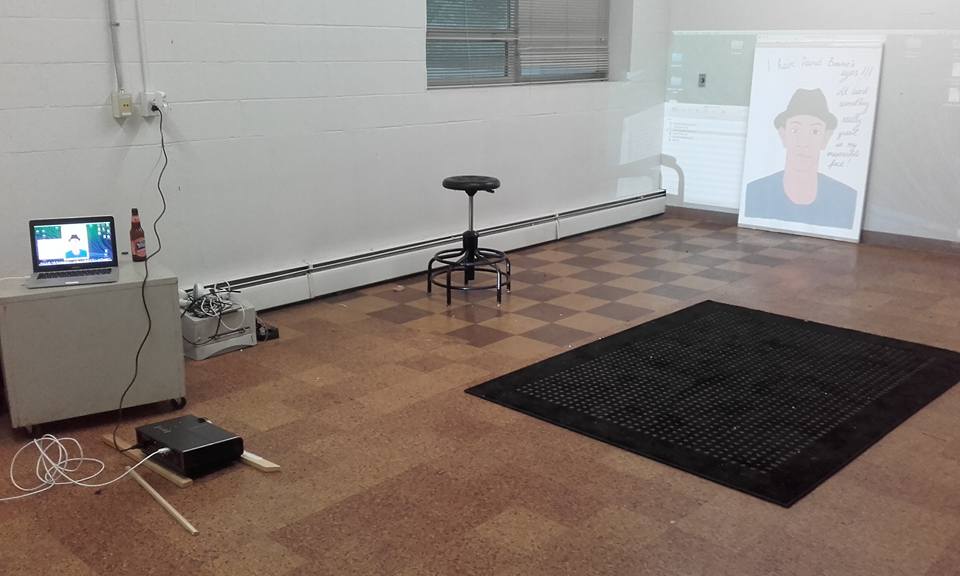Breadcrumb
Residencies
Members of the Estonian Artists’ Association (EAA), and in some cases its sub-associations, are eligible to apply for EAA residencies through an open call. These calls are typically announced at the beginning of the year, between January and March. Residents are selected by the EAA Residency Committee, which, starting in 2026, will include Tüüne-Kristin Vaikla, Jaanus Samma, Peeter Laurits, Juss Heinsalu and Krista Mölder.
COLLABORATION WITH THE HAMILTON ARTS COUNCIL
In collaboration, the Estonian Artists’ Association and the Hamilton Arts Council facilitate reciprocal artist residencies in Hamilton, Ontario, and Tallinn, Estonia, supporting professional development and international exchange. In 2024, the exchange programme was organised in cooperation with the Tartu Artists’ Union as part of the European Capital of Culture initiative.
Since 2019, artists have been selected through a public competition organised by the Hamilton Arts Council in co-operation with the EAA.
Artists who have participated in the exchange program include:
2017: Marko Mäetamm (Hamilton)
2018: Peeter Laurits (Hamilton), Tor Lukasik-Foss (Tallinn)
2019: Kai Kaljo (Hamilton), Tyler Tekatch (Tallinn)
2021: Britta Benno (Hamilton), Vanessa Crosbie Ramsay (Tallinn)
2022: Johanna Ulfsak & Kärt Ojavee (Hamilton), Lisa Pijuan-Nomura (Tallinn)
2023: Taavi Talve (Hamilton), Andrew McPhail (Tallinn)
2024: Edgar Tedresaar & Regina-Mareta Soonsein (Hamilton), Jacqui Oakley (Tartu)
2025: Kadri Toom (Hamilton), Lesley Loksi Chan (Tallinn)
In December 2018, following negotiations, a collaboration agreement was signed by Bo Myhrman, President of the Swedish Grez-sur-Loing Foundation, and Vano Allsalu, then President of the Estonian Artists' Association (EAA), to provide Estonian artists with residency opportunities at Hôtel Chevillon in France.
Located in the picturesque village of Grez-sur-Loing, a village with fewer than 1,500 residents and approximately 70 km from Paris, the area has a rich history as an artists' haven, attracting creatives like Carl Larsson, August Strindberg, and Robert Louis Stevenson in the late 19th century.
Since its reopening in 1994, Hôtel Chevillon has offered apartments and studios at discounted rates to partner organisations, which in turn make them available to artists through open competitions. EAA covers the accommodation costs, while artists cover travel and living expenses, often with support from the Estonian Cultural Endowment.
Participants in the Grez-sur-Loing residency program include:
2019: Sirja-Liisa Eelma
2022: Anna Litvinova
2023: Urmas Lüüs
2024: Darja Popolitova
2025: Anna Škodenko
VANTAA RESIDENCY
Since 2020, the collaboration agreement between the Estonian Artists' Association (EAA) and the Vantaa Artists' Association offers one EAA member per year the opportunity to live and work for a month in the Gjutars artists' guest studio in Vantaa, Finland. Under the same agreement, each year, one artist from the Vantaa Artists' Association also resides in the EAA guest studio in Tallinn.
The Vantaa residency is situated in a charming wooden house, just a short walk from Tikkurila railway station. In addition to becoming acquainted with the work of local Vantaa artists and enjoying a peaceful working environment, the residency provides an excellent opportunity to work in the Finnish capital – the train ride from Tikkurila to Helsinki city centre takes just about twenty minutes.
During the one-month residency, the artist is provided with free living and working space, and there is also financial support for travel expenses. By prior arrangement, the artist can present their work, organise exhibitions, and hold events. The competition is typically announced in early spring, with residencies taking place in summer or autumn. Applicants must be members of the Estonian Artists' Association or one of its sub-associations.
Artists who have participated in the Vantaa–Tallinn exchange program include:
2020: Tiiu Rebane (Vantaa), Jan Heinonen (Tallinn)
2021: Kai Kaljo (Vantaa), Jaana Tuomisto & Jaana Kangas (Tallinn)
2022: Mari-Leen Kiipli (Vantaa), Paula Pitkänen (Tallinn)
2023: Kelli Valk (Vantaa), Johanna Rytkölä (Tallinn)
2024: Tarrvi Laamann, Maryliis Teinfeldt-Grins & Francesco Rosso (Vantaa); Tarja Polari, Jan Heinonen, and Rosa Maria Ruotsalainen (Tallinn)
2025: Mari Volens (Vantaa), Päivi Allonen (Tallinn)






